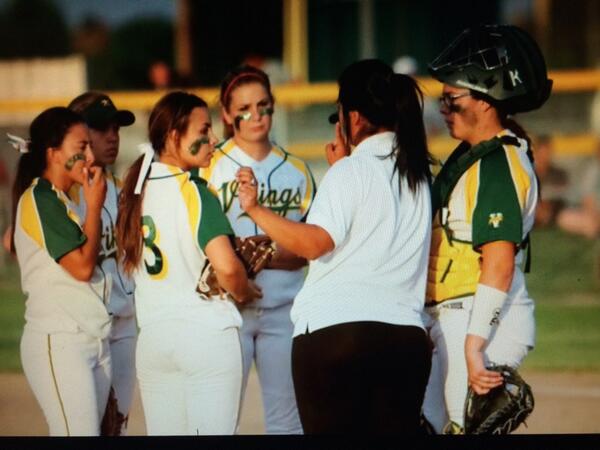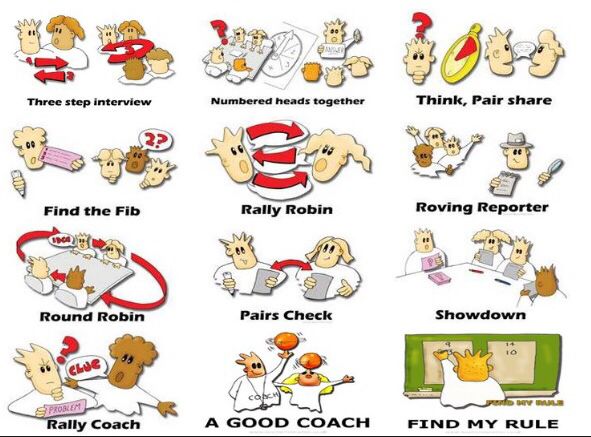5. Background Knowledge and Anticipatory Sets
The make up of your classroom varies in multiple ways. Culture, socioeconomic status, religion, family structure, political views, education level of the parents and so much more, contribute to your student's current understanding of the world. Not every student contains the same background knowledge as the classmate next to him or her. Therefore, it is important to get a feel for where students are prior to jumping into a text. At the high school level, it is important to understand ideas and concepts, as well as key vocabulary terms. To help gauge the direction I will take with my students, I first provide an "Anticipatory Set" or front load information about the text.
Anticipatory sets provide a framework that helps thinking. Students will be able to generate their own position on a topic while also hearing multiple view points. Below, you will see a chart that presents students with questions or themes that can be discussed during the reading of
The Most Dangerous Game. You can go over eat question and allow students to move from one side of the room to the other based on their position. You can have students complete the handout, jot down 2-3 reasons, and perform a Socratic seminar. Or just a general discussion which results in a writing piece that might discuss the plot of the story. The point of doing this is to prepare students with a focus for reading. Once you know they understand the main ideas and key points, reading comprehension will increase due to the constant reflection done with this handout.
Before Reading
|
Statement
|
After Reading
|
Agree
|
Disagree
|
Agree
|
Disagree
|
|
|
Man is more civilized than animal
|
|
|
|
|
It is alright to hunt animals for food
|
|
|
|
|
Murder is NEVER ok
|
|
|
|
|
Animals can feel fear
|
|
|
|
|
Hunting is considered Murder
|
|
|
|
|
It’s best to listen to your gut
|
|
|
|
|
You should do anything to survive
|
|
|
|
|
Nature is stronger than man
|
|
|
|
|
Killing an Animal should result in jail time
|
|
|
|
|
Animals should have rights like humans
|
|
|
|
|
Only humans have the ability to reason
|
|
|
4. Vary the Context
Just as background levels differ, so does the type of intelligence each student possesses. To name a few, Verbal learners, Logical learners, Visual learners, Kinesthetic learners, etc, within our student population is becoming widely increased. Therefore, the type of materials we use for reading should vary as well. As my English 2 classes are tackling
The Tempest by William Shakespeare, I had them first read the graphic novel.
You can access an online version of the Graphic Novel by clicking here. The students liked the visuals and were able to create a character chart based on what they saw. This helped them describe the characters or reference them during the discussion, "Well the guy is Prospero's slave, but what is keeping him faithful to the old guy? Why doesn't he just link up with that ugly monster thing" (actual student comment).
YouTube is a great resource for summarizing videos about what you've read. Depending on the complexity of the content, can depend on how often you use the summary videos. There are stories in which I want students to know the summary prior to reading
(The Odyssey) and there are others in which I chunk it by text
(Of Mice and Men).
Last but not least, you can use a reader's theatre to help promote the physicalizing of your texts, even if they aren't plays! If you have never taught
To Kill a Mockingbird to a bunch of unmotivated sophomore, you are in for a surprise. Some students really dove into the text, whereas others we simply not feeling it. Therefore, to help them better understand I typed up the "court scenes" and the students acted them out. It was a great change for me to use my theatre/screenwriting background to use. To this day, the students remember performing, the importance of the scene, the big ideas within the novel as well as some basic techniques to read with emotion. (See sample below)
To Kill a Mockingbird: Chapter 18 script
Mr. Gilmer
|
Judge Taylor
|
Mayella Ewell
|
Tom (no lines)
|
Atticus
|
Jem
|
Rev. Sykes
|
|
Judge Taylor: Mayella Violet Ewell. (She enters and is sworn in).
Mr. Gilmer: Where were you at dusk on that evening?
Mayella Ewell: On the porch.
Mr. Gilmer: What porch?
Mayella Ewell: Ain’t but one, the front porch.
Mr. Gilmer: What were you doing on the porch?
Mayella Ewell: Nothin’
Judge Taylor: Just tell us what happened. You can do that, can’t you?
Mayella Ewell begins to cry.
Judge Taylor: That’s enough now. Don’t be ‘fraid of anybody here, as long as you tell the truth. All this is strange to you, I know, but you’ve nothing to be ashamed of and nothing to fear. What are you scared of?
Mayella Ewell: (sobbing, points at Mr. Finch) Him!
Judge Taylor: Mr. Finch?
Mayella Ewell: (nodding vigorously). Don’t want him doin’ me like he done Papa, tryin’ to make him out lefthanded…
3. Record Students Reading
I was given this technique when I was in 6th grade. I struggled to read and comprehend (according to my teacher), therefore, for my book report, I had to record myself reading EACH chapter of my book. After the first chapter, I was to play it black and follow along with myself reading, followed by writing a chapter. Once I got to chapter 5, he changed the format. I was then supposed to read 5-8 paragraphs and summarize into my recording until the chapter was complete. I can remember the book and the assignment very vividly. As I grew older (and still to this day), I love listening to Audio books. I read all of the Harry Potter novels via audio TAPEs (not CDs) and have a few CDs of the Chronicles of Narnia that I play during long road trips.
Benefits of Audio books that are listed according to
Reading Rockets, WETA Public Broadcasting
- Introduce them to a higher reading level
- Model good interpretive reading
- Promote active listening
- Introduce new genres, unfamiliar vocabulary, writing styles and dialect
- Read aloud with the tapes
- Notice the emotional variation within the readers voice
2. Teach Active Reading, Close Reading, and Annotations
Active Reading means reading with a writing utensil in your hand and marking up the text. You can have students highlight based on the area of focus. I usually provide something called "Annotation Guidelines" in which the students are given a particular topic in which to look for while reading. Once they highlight the specific key idea, theme, sensory detail, form of rhetoric, unknown vocabulary word, etc, they make little notes on the side. Next, Students chunk the selection into various paragraphs and summarize that passage. They are encouraged to draw pictures and create a "key/legend" that helps them differentiate the various colors on their paper. This will help them organize for future classes and allows students to easily reference needed material within the text.


In the two pictures, we annotated a passage from William Shakespeare's
The Tempest. Each group received the same excerpt from the text and were given specific annotation guidelines they needed to complete. The different colors provide 2 purposes. 1) The variation of tasks asked by the guidelines and 2) The representation of the student's work. In a group of 3 I assigned students specific annotation tasks based on their skill level. (one task was 'easy' and the other provided a 'challenge'). Once that was completed, I placed the groups posters around the room. Students did a gallery walk to read the annotations from their classmates and took notes using a graphic organizer, focusing on the "Say-Matter-Mean" method that was taught to them the days prior. This promotes comprehension because students were looking at the same piece of text but analyzed in 9 different ways, in order to achieve 9 different group perspectives. At the end of the activity, we had a discussion about "Ah-Ha" moments for them and what they learned from their peers notes.
1. Vary the Location and Grouping Structure
Last but not least, differentiating the types of grouping and location in which students read. My students love when I read to them, even at the high school level. We all know about Whole class learning, small group learning and independent reading, which can get repetitive. Try switching it up, Left side read with right side, people with brown eyes and blue eyes, boys and girls, etc. Keep it fun and keep the people the read with new. Otherwise, reading will become boring for students and they will become use to only a few reading styles.
Do you always read within the classroom? Is there a quiet area that students may go to during a "free time" to read quietly? The location in which students read can also affect their ability to comprehend a text. What type of stimuli does your classroom or their room at home provide that could distract them from reading? For this you can try various methods such as playing soft music or a form of white noise. I subscribe to this YouTube channel to play background noise for my students. You can also, take them outside in the quad area or at the outdoor lunch tables if you have them. Varying the setting of the reading to fit into the reading can help students remember. This strategy also works well during physicalizing.
















